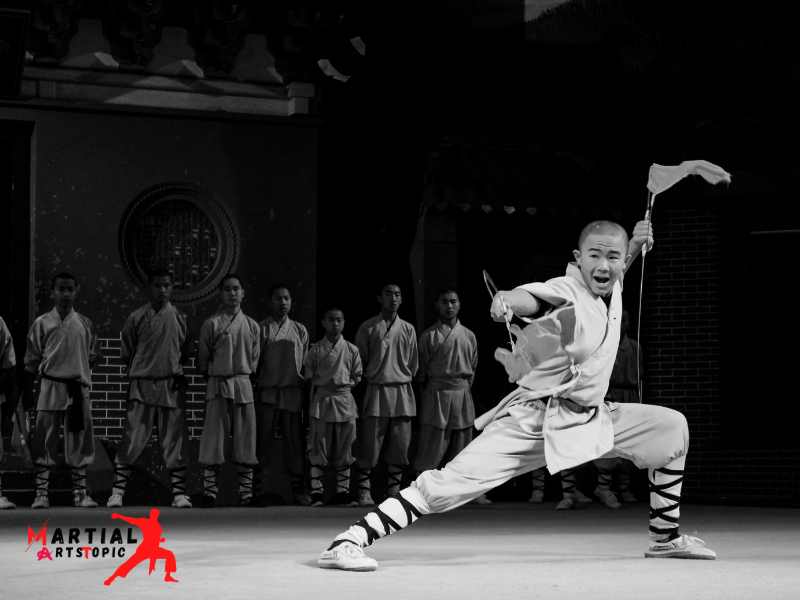
Unveiling the Secrets of Shaolin Kung Fu
What is Shaolin Kung Fu? Shaolin Kung Fu, a traditional Chinese martial art, is a captivating and dynamic discipline that has captured the imagination of people worldwide. Originating from the Shaolin Temple in Henan Province, this ancient practice encompasses an array of striking, grappling, and weaponry techniques. The secrets of Shaolin Kung Fu lie in its emphasis on agility, strength, and flexibility, as well as its deep-rooted connection to Zen Buddhism. Through dedicated practice, individuals can unlock their potential for physical and mental prowess, making Shaolin Kung Fu a truly transformative experience. Whether you are drawn to its rich history, seeking self-improvement, or simply fascinated by martial arts, delving into the world of Shaolin Kung Fu is an enriching and rewarding journey.
The Evolution of Shaolin Kung Fu: From Ancient Origins to Modern Practice
The Evolution of Shaolin Kung Fu: From Ancient Origins to Modern Practice Shaolin Kung Fu, also known as Shaolin Wushu, is a martial art that originated in the Shaolin Temple in China. With a history spanning over thousands of years, this ancient art form has developed and transformed, adapting to the changing times while retaining its core principles and techniques. In this blog post, we will explore the fascinating journey of Shaolin Kung Fu, from its ancient origins to its modern-day practice.
Ancient Origins of Shaolin Kung Fu
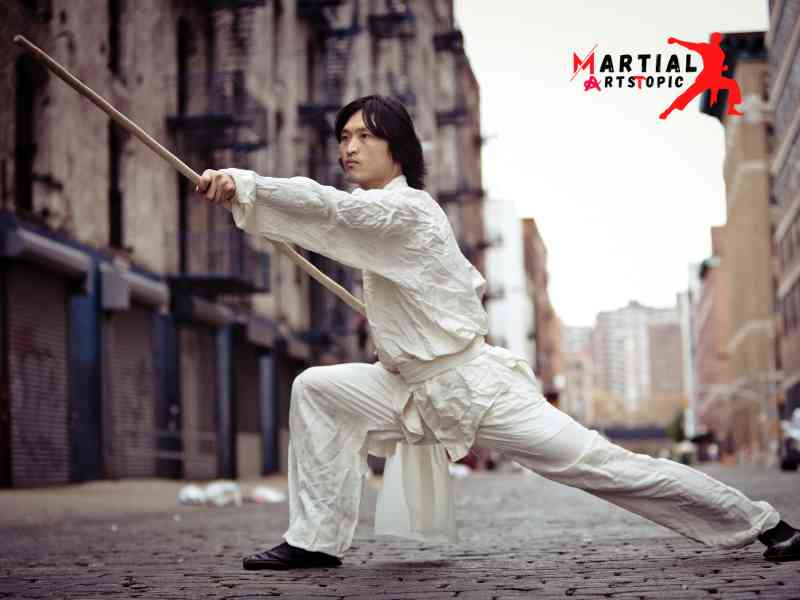
Shaolin Kung Fu traces its roots back to the early days of Chinese civilization. Legend has it that an Indian Buddhist monk named Bodhidharma (also known as Damo) traveled to the Shaolin Temple in the 6th century. Concerned about the physical and mental well-being of the monks, he introduced a series of exercises and meditation techniques that would later become the foundation of Shaolin Kung Fu.
The Shaolin Temple soon became a hub for martial arts training, attracting warriors, monks, and scholars from all over China. Over the centuries, the monks at the Shaolin Temple refined and expanded their martial arts knowledge, merging it with their spiritual practices. Shaolin Kung Fu became known for its unique combination of physical techniques, mental discipline, and spiritual cultivation.
The Influence of Shaolin Kung Fu
Shaolin Kung Fu gained widespread recognition and influence during the Tang Dynasty (618-907 AD). Emperors and military leaders sought the expertise of Shaolin Kung Fu masters to train their armies, realizing the effectiveness of the art in combat. The Shaolin Temple became a center of martial arts excellence, attracting talented practitioners and spreading the influence of Shaolin Kung Fu throughout China.
Over time, Shaolin Kung Fu developed and diversified, with different styles and schools emerging. Each style had its unique characteristics, emphasizing different techniques, forms, and philosophies. Some of the famous Shaolin styles include Northern Shaolin, Southern Shaolin, and Five Animals.
Modern Practice of Shaolin Kung Fu
In the modern era, Shaolin Kung Fu continues to thrive and develop. It has gained international recognition as a respected martial art and has spread to different parts of the world. Shaolin Kung Fu schools and training centers can now be found in numerous countries, catering to practitioners of all ages and skill levels.
The practice of Shaolin Kung Fu encompasses various aspects, including physical conditioning, forms of practice, self-defense techniques, and meditation. It offers numerous benefits, such as improved physical fitness, enhanced mental focus, increased self-confidence, and a deeper understanding of Chinese culture and philosophy.
While Shaolin Kung Fu has adapted to modern times, it remains rooted in its ancient traditions and principles. The Shaolin monks continue to be the custodians of this ancient art, preserving its teachings and passing them down through generations.
The evolution of Shaolin Kung Fu from its ancient origins to its modern practice is a testament to its enduring appeal and effectiveness. This martial art has transcended time and borders, captivating martial arts enthusiasts and practitioners around the world.
Whether you are a beginner or an experienced practitioner, Shaolin Kung Fu offers a transformative journey that combines physical training, mental discipline, and spiritual growth. So, if you seek a martial art that embodies tradition, strength, and wisdom, look no further than Shaolin Kung Fu.
Embark on the path of Shaolin Kung Fu and discover the profound art that has stood the test of time. Experience the power and grace of this ancient martial art as you immerse yourself in its rich history, techniques, and philosophy. Let Shaolin Kung Fu be your guide in the pursuit of physical and mental excellence.
What is Shaolin Kung Fu?
What is Shaolin Kung Fu? Shaolin Kung Fu, also known as Shaolin Wushu, is a traditional Chinese martial art that originated at the Shaolin Temple in Henan Province, China. It is renowned for its extensive and diverse forms, incorporating both unarmed combat and weaponry techniques. Its emphasis characterizes Shaolin Kung Fu on strength, agility, and flexibility, as well as its deep-rooted philosophy of discipline, respect, and self-improvement. This ancient martial art has gained global recognition for its unique and dynamic movements, making it a popular choice for fitness, self-defense, and cultural appreciation. Practitioners of Shaolin Kung Fu dedicate themselves to the mastery of both physical and mental abilities, striving for balance and harmony in all aspects of life.
The Shaolin Lifestyle: Benefits of Practicing Shaolin Kung Fu
The Shaolin Lifestyle: Benefits of Practicing Shaolin Kung Fu In today’s fast-paced world, finding balance and inner peace can sometimes feel like an impossible task. However, there are ancient practices that have been passed down through generations that can help us reconnect with ourselves and find harmony in our lives. One such practice is Shaolin Kung Fu, a martial art form that not only trains the body but also nurtures the mind and spirit.
Shaolin Kung Fu, also known as Shaolin Wushu, is a traditional Chinese martial art that originated from the Shaolin Temple in China. It has a rich history that dates back thousands of years and is deeply rooted in Buddhist philosophy. The monks of the Shaolin Temple developed this martial art form as a way to protect themselves and their beliefs. Over time, it developed into a comprehensive system that encompasses self-defense techniques, physical training, meditation, and spiritual cultivation.
Practicing Shaolin Kung Fu offers numerous benefits for both the body and the mind. Let’s explore some of the key advantages of embracing the Shaolin lifestyle:
- Physical Fitness: Shaolin Kung Fu is a rigorous physical discipline that challenges every aspect of your body. The training involves a wide range of movements, including kicks, punches, jumps, and stances, which improve strength, flexibility, and cardiovascular endurance. Regular practice of Shaolin Kung Fu can help you build a strong and healthy body, enhance coordination, and improve overall fitness levels.
- Self-Defense: One of the primary objectives of Shaolin Kung Fu is to equip practitioners with effective self-defense skills. The techniques taught in Shaolin Kung Fu are practical, focusing on using an opponent’s strength against them. Learning this ancient martial art form can give you the confidence and ability to protect yourself in dangerous situations.
- Mental Focus: Shaolin Kung Fu is not just about physical strength; it also emphasizes mental discipline and focus. Through various meditation techniques, practitioners learn to calm their minds, increase concentration, and develop a heightened sense of awareness. We can apply these mental skills not only in martial arts but also in everyday life, helping individuals better manage stress and improve their productivity.
- Spiritual Growth: something deeply rooted Shaolin Kung Fu in Buddhist philosophy, and its practice goes beyond physical movements. The Shaolin lifestyle encourages practitioners to cultivate virtues such as compassion, humility, and discipline. By incorporating meditation and mindfulness into their training, practitioners embark on a journey of self-discovery and spiritual growth.
- Cultural Appreciation: Shaolin Kung Fu is not just a martial art; it is a cultural heritage of China. Learning and practicing Shaolin Kung Fu allows individuals to immerse themselves in the rich traditions and history of Chinese culture. It provides a unique opportunity to appreciate the values, customs, and philosophy that have shaped the Shaolin way of life.
So, why wait? Take the first step towards a healthier, stronger, and more fulfilled life by exploring the wonders of Shaolin Kung Fu. Start your journey today and unlock the incredible benefits that await you!
Shaolin Kung Fu Weapons: Unveiling the Ancient Artistry
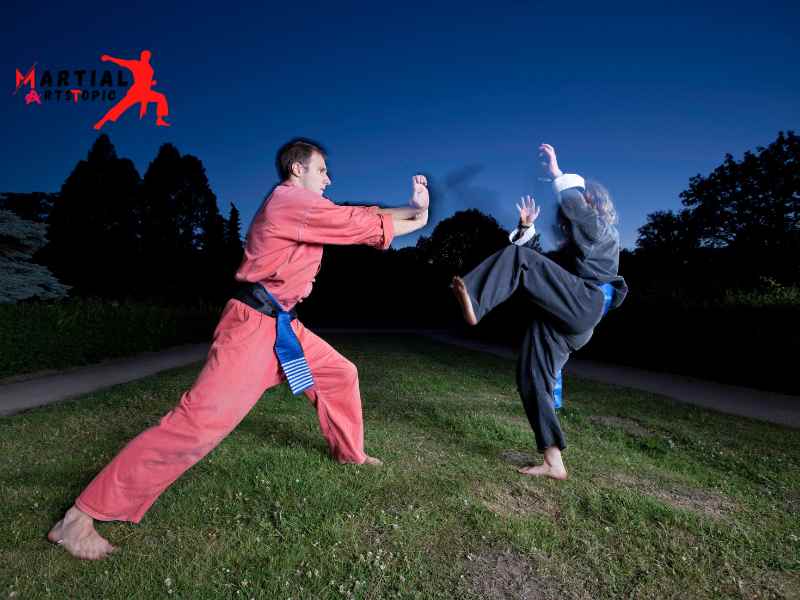
Shaolin Kung Fu Weapons: Unveiling the Ancient Artistry. Shaolin Kung Fu has captivated martial arts enthusiasts around the world for centuries. Known for its impressive techniques and disciplined philosophy, Shaolin Kung Fu is a true testament to the human potential for physical and mental mastery. While the art form itself is awe-inspiring, there is a particular aspect that showcases the ancient artistry of Shaolin Kung Fu – its weapons.
The fascinating world of Shaolin Kung Fu weapons, exploring their history, significance, and the artistry behind their creation. From legendary staffs to lethal swords, each weapon carries its own unique purpose and requires years of practice to master. So, let’s unveil the ancient artistry of Shaolin Kung Fu weapons.
The Staff (Gun)
The staff, also known as “gun” in Chinese, is one of the most iconic weapons of Shaolin Kung Fu. Crafted from sturdy wood and measuring around six to nine feet long, the staff is a versatile weapon that allows practitioners to strike, block, and disarm opponents with ease. Its length grants an extended reach, making it a formidable defensive and offensive tool.
The Sword (Jian)
The sword, or “jian,” is a symbol of elegance and precision in Shaolin Kung Fu. With a curved blade and a straight, double-edged design, the jian requires exceptional skill and control to wield effectively. Known for its lightning-fast strikes and fluid movements, the sword embodies the grace and artistry of Shaolin Kung Fu.
The Spear (Qiang)
The spear, or “qiang,” is a weapon that dates back to ancient times. With a long wooden shaft and a piercing metal tip, the spear is a formidable weapon in the hands of a skilled practitioner. Its versatility allows for both long-range attacks and close-quarters combat, making it an essential weapon in Shaolin Kung Fu.
The Monk’s Spade (WuShu Dao)
The monk’s spade, or “wushu dao,” is a unique weapon that combines the functionalities of a staff and a spade. Originally used by Shaolin monks for farming and self-defense, the monk’s spade has strengthened into a lethal weapon. Its crescent-shaped blade and sturdy staff create a deadly combination, making it a weapon of choice for those trained in Shaolin Kung Fu.
The Chain Whip (Niu Zi Bian)
The chain whip, or “niuzi bian,” is a weapon that demands exceptional dexterity and coordination. Consisting of a metal chain with a weighted end, we can use the chain whip for both striking and grappling techniques. Its versatility and unpredictable movements make it a formidable weapon in the hands of a skilled Shaolin Kung Fu practitioner.
Shaolin Kung Fu weapons are not merely instruments of combat but embodiments of ancient artistry and masterful craftsmanship. The intricate details, from the choice of materials to the design elements, highlight the dedication and skill required to create these weapons. Each weapon tells a story and carries the rich heritage of Shaolin Kung Fu.
To truly appreciate the ancient artistry of Shaolin Kung Fu weapons, one must witness the disciplined movements and precision of a trained practitioner. The artistry lies not only in the physical power and technique but also in the spiritual and mental fortitude cultivated through years of practice and discipline.
The Role of Meditation in Shaolin Kung Fu Practice
The Role of Meditation in Shaolin Kung Fu Practice Shaolin kung fu is a traditional Chinese martial art that has gained worldwide recognition for its impressive techniques and rigorous training. One aspect of Shaolin kung fu that sets it apart from other martial arts is its emphasis on meditation as an integral part of the practice. The role of meditation in Shaolin kung fu and how it contributes to the development of the mind, body, and spirit.
Meditation has been an essential component of Shaolin kung fu for centuries. The monks of the Shaolin Temple, where the art originated, understood the importance of training not only the physical body but also the mind. They recognized that a calm and focused mind is essential for mastering the intricate movements and techniques of kung fu. Thus, meditation became an integral part of their training regimen.
One of the primary purposes of meditation in Shaolin kung fu is to cultivate a state of mental clarity and focus. Through the practice of meditation, practitioners learn to quiet the mind, let go of distractions, and develop a heightened sense of awareness. This state of mind is crucial for executing precise movements and reacting swiftly during combat situations. By training the mind to be present and focused, practitioners can perform at their best and maximize their potential.
Furthermore, meditation in Shaolin kung fu helps to develop inner strength and resilience. The physical demands of kung fu training can be grueling, and practitioners often face challenges and setbacks along their journey. Through meditation, they learn to cultivate patience, perseverance, and mental fortitude. This inner strength enables them to overcome obstacles, both on and off the training mat, and continue to progress in their practice.
In addition to mental benefits, meditation also plays a role in enhancing the physical aspects of Shaolin kung fu. By calming the mind and focusing inward, practitioners are better able to connect with their bodies and develop a deep understanding of their movements. This mind-body connection is crucial for executing techniques with precision, power, and efficiency. Through meditation, practitioners learn to move with grace, balance, and fluidity, ultimately enhancing their overall performance in kung fu.
Beyond the physical and mental aspects, something deeply rooted meditation in Shaolin kung fu in spiritual development. The practice encourages self-reflection, introspection, and the cultivation of inner peace. By exploring the depths of their consciousness, practitioners gain a deeper understanding of themselves and their place in the universe. This spiritual exploration is a personal journey that goes hand in hand with the physical and mental training of kung fu.
Shaolin Kung Fu: Essential Techniques and Training Tips
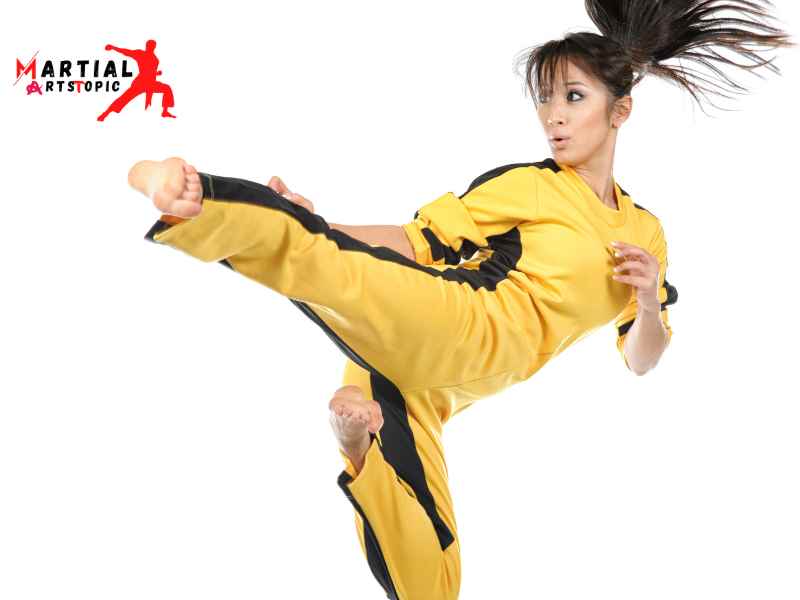
Shaolin Kung Fu: Essential Techniques and Training Tips Are you intrigued by the world of martial arts? Do you want to learn the ancient art of Shaolin Kung Fu? Look no further! In this comprehensive guide, we will take you through the essential techniques and training tips to help you become a master in Shaolin Kung Fu.
Shaolin Kung Fu, also known as Shaolin Wushu, is a traditional Chinese martial art that originated from the Shaolin Temple in Henan Province. It is renowned for its dynamic moves, as well as its emphasis on discipline, agility, and spiritual growth. By practicing Shaolin Kung Fu, you not only develop physical strength, but also cultivate mental focus and inner peace.
Let’s dive into the essential techniques you need to master in order to excel in Shaolin Kung Fu:
- Stances: The foundation of Shaolin Kung Fu lies in its various stances. These include horse stance, bow stance, and cat stance, among others. By mastering these stances, you develop stability, balance, and the ability to generate power from the ground up.
- Strikes: Shaolin Kung Fu incorporates a wide range of strikes, including punches, kicks, and palm strikes. They execute each strike with precision and power, making it essential to practice proper form and technique. By focusing on speed, accuracy, and control, you can maximize the effectiveness of your strikes.
- Blocks and Parries: Defense is as important as offense in Shaolin Kung Fu. Learning various blocks and parries will enable you to protect yourself from incoming attacks. By practicing correct timing and positioning, you can effectively neutralize your opponent’s strikes and counter with your own.
- Forms: Forms, or “katas,” are a series of prearranged movements that simulate combat scenarios. Shaolin Kung Fu offers a wide repertoire of forms, each with its own unique combination of strikes, kicks, and stances. By practicing forms, you enhance your coordination, fluidity, and overall martial arts skills.
- Qi Gong: Shaolin Kung Fu places great emphasis on Qi Gong, a practice that cultivates internal energy and promotes overall well-being. By learning various breathing techniques and meditation exercises, you can harness your internal energy, improve focus, and enhance your mental clarity.
Now that you have an understanding of the essential techniques of Shaolin Kung Fu, let’s explore some training tips to help you progress on your journey:
- Find a Qualified Instructor: Shaolin Kung Fu is a complex and nuanced martial art that requires expert guidance. Look for a qualified instructor who has experience in teaching traditional Shaolin Kung Fu. A good instructor will not only teach you the techniques but also guide you on the path of discipline and spiritual growth.
- Consistency is key: Like any martial art, mastering Shaolin Kung Fu requires consistent practice. Make a commitment to train regularly, even if it’s just a few times a week. By establishing a routine, you will gradually build strength, improve flexibility, and refine your techniques.
- Train Both Body and mind: Shaolin Kung Fu is not just a physical practice; it also cultivates mental discipline and focus. Incorporate meditation and breathing exercises into your training routine to enhance your mental clarity and overall well-being.
- Practice with Purpose: When training, focus on quality over quantity. Pay attention to your form, technique, and body alignment. By practicing with purpose and mindful awareness, you will progress faster and reduce the risk of injury.
- Embrace the Shaolin Philosophy: something deeply rooted Shaolin Kung Fu in a philosophy of compassion, humility, and respect. Embrace these values both in and out of the training hall. Treat your fellow practitioners with kindness, and approach your training with an open mind and heart.
The Mental and Physical Benefits of Practicing Shaolin Kung Fu
The Mental and Physical Benefits of Practicing Shaolin Kung Fu Shaolin Kung Fu, a traditional Chinese martial art, is not just about fighting and self-defense. It is a holistic practice that offers numerous mental and physical benefits. From improving focus and discipline to enhancing physical fitness and coordination, Shaolin Kung Fu has become increasingly popular worldwide. In this blog post, we will explore some of the key benefits of practicing Shaolin Kung Fu and how it can positively impact your overall well-being.
Mental Clarity and Focus
One of the primary benefits of practicing Shaolin Kung Fu is the improvement in mental clarity and focus. The disciplined training routines and techniques require practitioners to concentrate and be fully present in the moment. This level of focus helps to enhance cognitive abilities, memory, and concentration skills. Regular practice of Shaolin Kung Fu can greatly improve mental acuity, allowing individuals to better cope with the challenges of daily life.
Stress Relief
In today’s fast-paced world, stress has become a common part of our lives. Shaolin Kung Fu provides a healthy outlet for stress relief. The rigorous training routines, combined with the rhythmic movements and controlled breathing, help to release tension and promote relaxation. By focusing on the techniques and movements, practitioners can find solace and escape from the pressures of everyday life. The discipline and mindfulness involved in Shaolin Kung Fu can also aid in managing stress and anxiety in the long run.
Physical Fitness and Strength
Shaolin Kung Fu is renowned for its physical demands. The intense training sessions, which include rigorous exercises, strength training, and flexibility drills, contribute to improved physical fitness and strength. Regular practice of Shaolin Kung Fu can help build strong muscles, improve cardiovascular health, and increase overall endurance. The various stances, kicks, punches, and jumps involved in Shaolin Kung Fu require full-body engagement, leading to enhanced coordination, balance, and agility.
Self-Discipline and Confidence
Shaolin Kung Fu is a discipline that instills self-discipline and cultivates a sense of confidence in practitioners. The strict training regimens and adherence to the principles of respect, humility, and perseverance foster discipline and self-control. As individuals progress in their practice, they gain confidence in their abilities, both physically and mentally. This newfound confidence extends beyond the training hall and positively influences other aspects of life, including relationships, work, and personal growth.
Cultivation of Inner Peace and Harmony
Someone deeply rooted Shaolin Kung Fu in Chinese philosophy and spirituality. It emphasizes the balance of mind, body, and spirit. Through dedicated practice, practitioners can cultivate inner peace and harmony. The focus on mindfulness and meditation techniques within Shaolin Kung Fu helps to calm the mind, reduce negative emotions, and promote a sense of tranquility. This aspect of Shaolin Kung Fu is particularly beneficial in today’s fast-paced, chaotic world, offering a sanctuary for inner peace and personal growth.
The Animal Styles of Shaolin Kung Fu
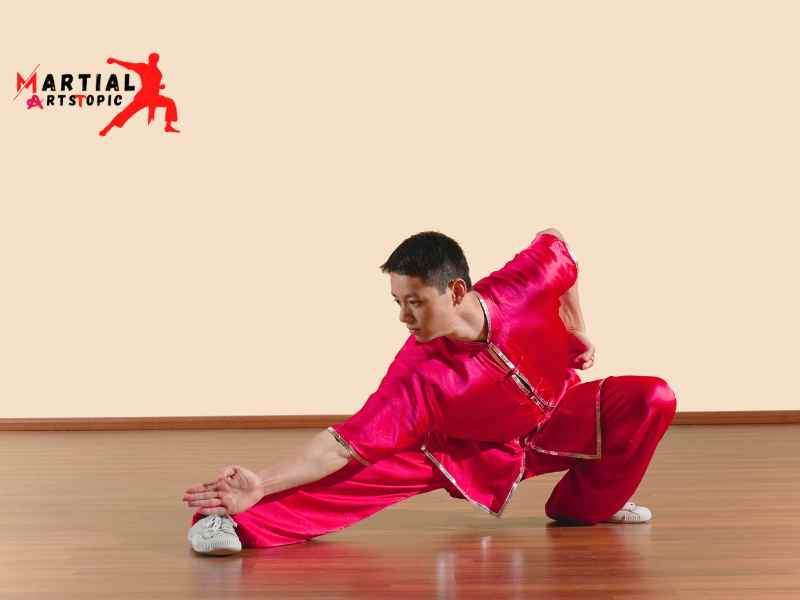
The Five Animal Styles of Shaolin Kung Fu Shaolin Kung Fu, a martial art that originated in the Shaolin Temple in China, is renowned for its powerful techniques. Within Shaolin Kung Fu, there are various styles that practitioners can learn and master. One they know such set of styles as the Five Animal Styles, which draws inspiration from the movements and characteristics of five different animals: the tiger, the crane, the leopard, the snake, and the dragon.
Each animal style in Shaolin Kung Fu represents a unique approach to combat, combining agility, strength, and strategy. Let’s delve into the essence of each animal style and discover its distinctive traits.
- The Tiger Style: Its aggressive movements characterize the Tiger Style in Shaolin Kung Fu. Mimicking the ferocity and power of a tiger, practitioners of this style focus on strong strikes, explosive kicks, and relentless attacks. The Tiger Style emphasizes physical strength and conditioning, making it ideal for those looking to develop power and assertiveness in their martial arts practice.
- The Crane Style: In contrast to the Tiger Style, we know the Crane Style in Shaolin Kung Fu for its grace, fluidity, and precision. Inspired by the elegant movements of a crane, practitioners of this style prioritize balance, flexibility, and agility. The Crane Style incorporates intricate footwork, sweeping motions, and quick strikes, making it an excellent choice for those seeking finesse and elegance in their martial arts practice.
- The Leopard Style: Its speed, agility, and stealth characterizes the Leopard Style in Shaolin Kung Fu. Drawing inspiration from the swift and calculated movements of a leopard, practitioners of this style focus on lightning-fast strikes, evasive footwork, and close-quarter combat techniques. The Leopard Style emphasizes quick reflexes, adaptability, and surprise attacks, making it an effective choice for those who prefer a more elusive and unpredictable approach to martial arts.
- The Snake Style: The Snake Style in Shaolin Kung Fu embodies the cunning, flexibility, and fluidity of a snake. Practitioners of this style utilize intricate hand techniques, coiling movements, and deceptive strikes. The Snake Style emphasizes sensitivity, timing, and the ability to strike with precision and accuracy. The Snake Style is ideal for those who wish to enhance their dexterity, control, and tactical awareness in their martial arts practice.
- The Dragon Style: The Dragon Style in Shaolin Kung Fu symbolizes power, wisdom, and spirituality. Inspired by the mythical creature, practitioners of this style incorporate circular and flowing movements, emphasizing internal energy cultivation and harmonious body mechanics. The Dragon Style combines strength, grace, and flexibility, making it a well-rounded choice for those seeking a holistic approach to martial arts.
In conclusion
What is Shaolin Kung Fu? Shaolin kung fu is a remarkable martial art form that has captivated people around the world for centuries. Its rich history, deep philosophical roots, and rigorous training methods make it a truly unique and revered practice. From its origins in the Shaolin Temple to its influence on modern martial arts, Shaolin kung fu continues to inspire and empower individuals on their journey towards physical and mental mastery. Whether one seeks self-defense skills, physical fitness, or a deeper understanding of oneself, Shaolin kung fu offers a path of discipline, resilience, and self-discovery. By embracing the teachings and training of Shaolin kung fu, practitioners can find a harmonious balance between mind, body, and spirit, while also preserving and celebrating this ancient art form for generations to come.
